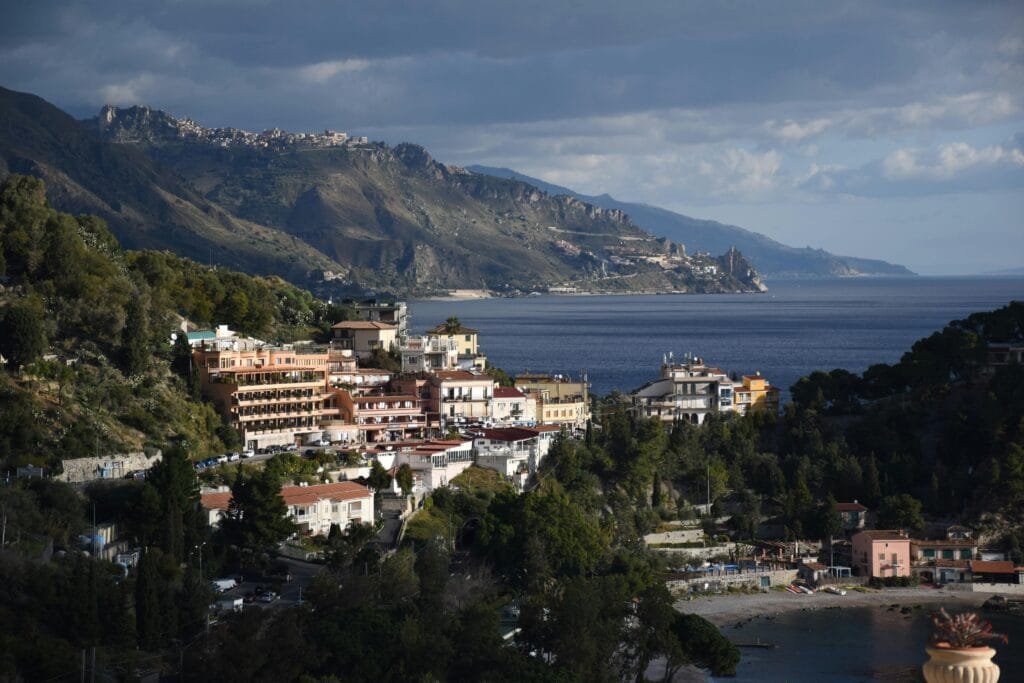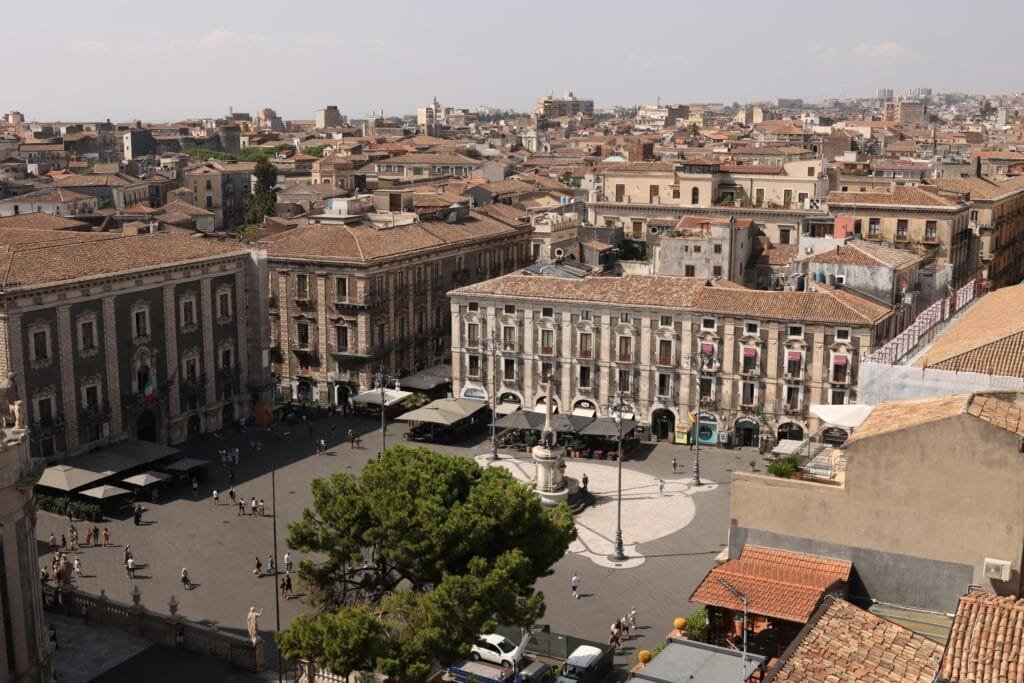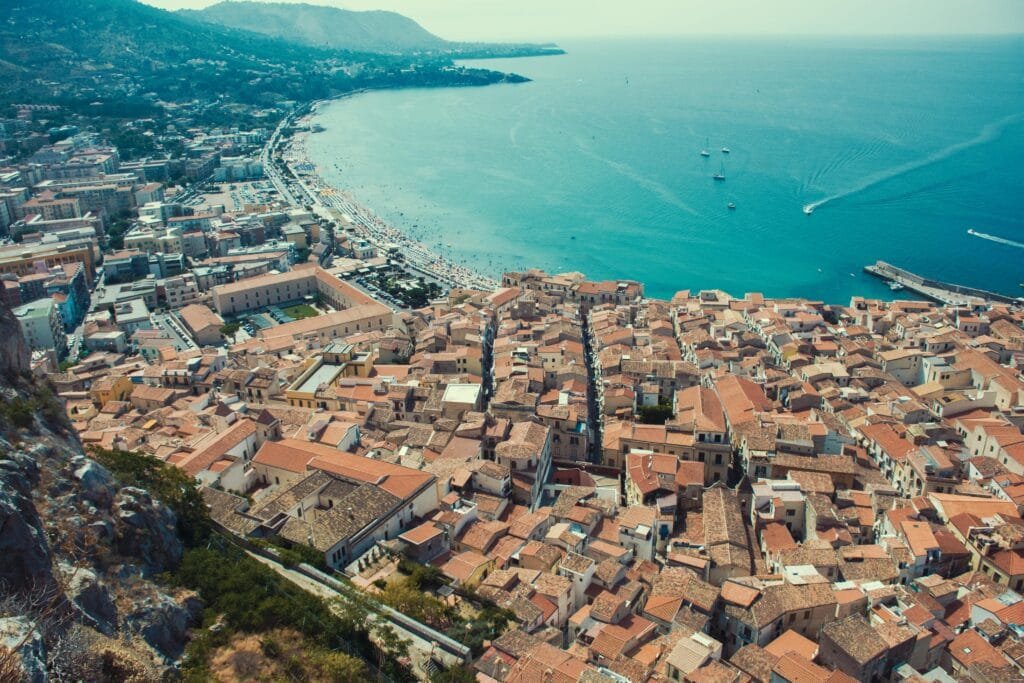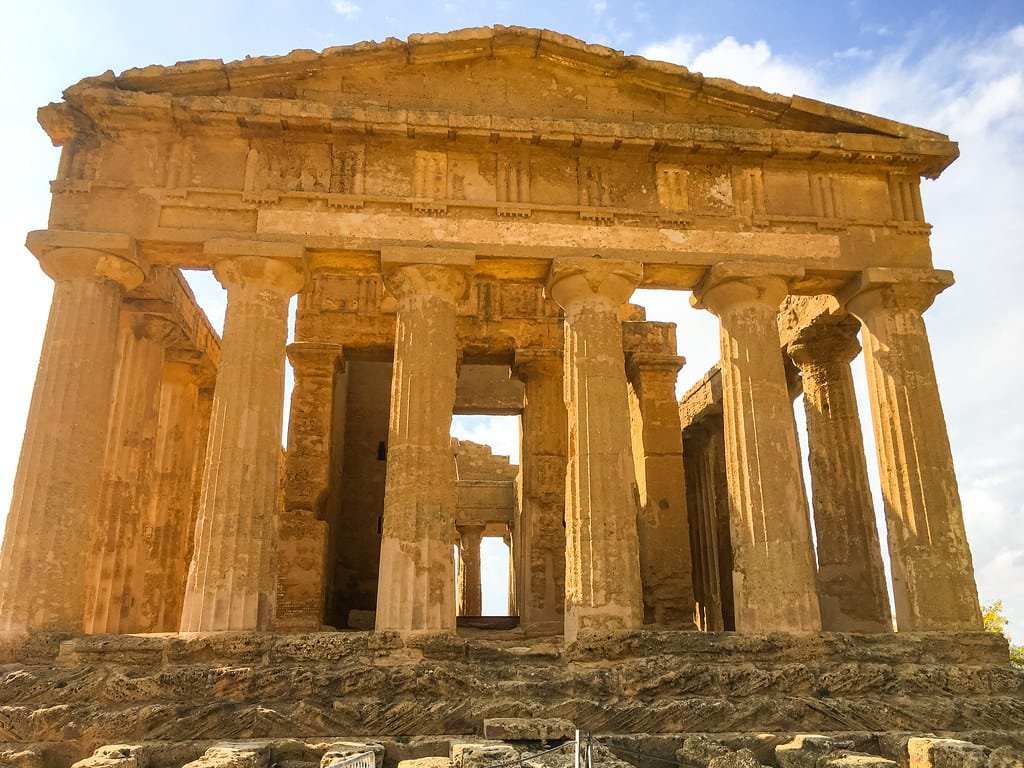Introduction

Sicily is more than just Italy’s largest island—it’s a land of ancient ruins, dramatic landscapes, vibrant cities, and mouthwatering cuisine. Located at the crossroads of the Mediterranean Sea, Sicily has been shaped by Greek, Roman, Arab, and Norman influences, making it one of the most unique destinations in Europe.
From the historic streets of Palermo and Syracuse to the volcanic peaks of Mount Etna, Sicily offers an unforgettable blend of culture, adventure, and relaxation. Whether you’re a history lover, foodie, or beach enthusiast, Sicily has something for everyone.
The History of Sicily
Sicily’s history is one of conquest and cultural exchange, with civilizations leaving behind architectural, culinary, and linguistic influences.
Ancient Sicily
- Settled by the Phoenicians and Greeks around 800 BC.
- Greek colonies like Syracuse and Agrigento flourished, building temples and theaters.
- Became a Roman province in 241 BC, bringing prosperity and development.
The Norman and Arab Influence
- Arabs ruled Sicily in the 9th century, introducing irrigation, citrus fruits, and exotic spices.
- Normans conquered Sicily in 1061, blending European, Arab, and Byzantine cultures.
Sicily in Modern Italy
- Became part of unified Italy in 1861.
- Today, it remains an autonomous region with a distinct identity, language, and traditions.
Sicily’s rich past makes it a living museum, where every corner tells a story of the civilizations that shaped it.
Map Location
The Best Cities to Visit in Sicily
Palermo – The Island’s Vibrant Capital

- Home to Palermo Cathedral, the Norman Palace, and Ballarò Market.
- Famous for street food, including Pane e Panelle and Arancini.
- A mix of Arab, Norman, and Baroque architecture.
Catania – The Gateway to Mount Etna

- Built from black lava stone, giving it a unique look.
- Piazza del Duomo and the Elephant Fountain are must-sees.
- A great starting point for hiking Mount Etna.
Syracuse – A Greek Treasure
- The Greek Theater and Ear of Dionysius cave.
- Ortigia Island, with its charming alleys and waterfront views.
- A rich blend of Greek, Roman, and Baroque architecture.
Taormina – Sicily’s Most Scenic Town
- The Greek Theater offers stunning views of Mount Etna and the sea.
- Isola Bella, a beautiful small island accessible by foot at low tide.
- Elegant streets filled with boutiques, restaurants, and cafes.
Agrigento – The Valley of the Temples
- Home to some of the best-preserved Greek temples in the world.
- The Temple of Concordia is the most famous landmark.
- A must-visit for history lovers.
Each city offers a different side of Sicily, from bustling urban centers to charming seaside villages.
Sicily’s Most Stunning Natural Wonders
Sicily is not just about history; it’s also home to incredible natural landscapes, from volcanoes to breathtaking coastlines.
Mount Etna – Europe’s Highest and Most Active Volcano
- One of the world’s most active volcanoes, reaching 3,357 meters (11,000 feet).
- Visitors can hike, take a cable car, or explore lava caves.
- Offers stunning views of Catania and the surrounding countryside.
Scala dei Turchi – The White Limestone Cliffs
- A dramatic white rock formation along the coast near Agrigento.
- The name means “Stair of the Turks” due to its step-like appearance.
- A great spot for sunset views and photography.
Zingaro Nature Reserve – A Hiker’s Paradise
- One of Sicily’s most beautiful coastal reserves, located near San Vito Lo Capo.
- Offers pristine beaches, hiking trails, and stunning sea views.
- Ideal for nature lovers, bird watchers, and photographers.
The Aeolian Islands – Sicily’s Volcanic Archipelago
- A group of seven stunning islands, including Stromboli, Lipari, and Vulcano.
- Known for black sand beaches, thermal springs, and active volcanoes.
- A UNESCO World Heritage site, perfect for island-hopping and adventure.
Sicily’s diverse landscapes make it a dream destination for hikers, beach lovers, and adventure seekers.
Sicily’s Best Beaches
Sicily boasts some of Italy’s most breathtaking beaches, with turquoise waters and golden sands.
San Vito Lo Capo – The Most Beautiful Beach in Sicily

- A Caribbean-like beach with soft white sand and crystal-clear waters.
- Great for swimming, sunbathing, and snorkeling.
- Surrounded by mountains and charming seaside cafes.
Cefalù – A Historic Beach Town

- Offers a stunning mix of medieval streets and a scenic beach.
- Great for a relaxing beach day with easy access to local restaurants.
- The town’s Arab-Norman Cathedral is a UNESCO World Heritage Site.
Isola Bella – The Gem of Taormina

- A tiny island connected to the mainland by a sandbar.
- Surrounded by crystal-clear waters, ideal for snorkeling.
- One of the most picturesque and photographed beaches in Sicily.
Favignana – A Secluded Beach Paradise
- A small island west of Sicily, part of the Egadi Islands.
- Offers hidden coves, turquoise lagoons, and quiet beaches.
- Great for diving and underwater photography.
With so many stunning beaches, Sicily is a dream destination for sun and sea lovers.
Sicily’s Incredible Ancient Ruins
Sicily is a treasure trove of ancient ruins, with influences from the Greeks, Romans, and Byzantines.
The Valley of the Temples (Agrigento)

- One of the best-preserved Greek temple sites in the world.
- The Temple of Concordia is one of the most complete Doric temples still standing.
- A must-see for anyone interested in Greek history and architecture.
The Greek Theater of Taormina
- A stunning ancient theater overlooking Mount Etna and the sea.
- Built by the Greeks in the 3rd century BC, later expanded by the Romans.
- Still used today for concerts and theater performances.
The Roman Amphitheater in Catania
- A large, well-preserved amphitheater built during the Roman Empire.
- Could hold over 15,000 spectators, hosting gladiator fights and performances.
- Hidden beneath modern Catania, but parts are visible near Piazza Stesicoro.
The Archaeological Park of Neapolis (Syracuse)
- Home to one of the largest Greek theaters in the world.
- Includes the Ear of Dionysius, a cave known for its unique acoustics.
- A must-visit for fans of Greek and Roman history.
Sicily’s ancient ruins rival those of Athens and Rome, making it a top destination for history lovers.
Sicilian Food and Wine
Sicily’s cuisine is a delicious blend of Italian, Greek, Arab, and Spanish influences.
Traditional Sicilian Dishes
- Arancini – Fried rice balls filled with ragu, cheese, or spinach.
- Pasta alla Norma – A pasta dish with eggplant, tomato sauce, and ricotta cheese.
- Caponata – A sweet and sour eggplant stew.
- Cannoli – A famous Sicilian dessert with crispy pastry shells and sweet ricotta filling.
- Granita – A refreshing semi-frozen dessert, best enjoyed with brioche bread.
Sicilian Wines
- Nero d’Avola – Sicily’s most famous red wine, bold and fruity.
- Marsala Wine – A sweet fortified wine, great for cooking and desserts.
- Etna Rosso – A volcanic wine made from grapes grown on Mount Etna.
Sicily is a food lover’s paradise, offering some of the best flavors in Italy.
Festivals and Cultural Events in Sicily
Sicilians love to celebrate, and the island hosts spectacular festivals throughout the year.
Carnival of Acireale
- One of Italy’s most colorful carnivals, featuring parades and elaborate floats.
- Held every February, with music, dancing, and costumes.
The Feast of Santa Rosalia (Palermo)
- Celebrated every July 14-15, honoring Palermo’s patron saint.
- Features religious processions, fireworks, and street food.
Infiorata di Noto
- A stunning flower festival held in May.
- The streets of Noto are covered in beautiful flower carpets.
The Almond Blossom Festival in Agrigento
- A spring festival celebrating Sicilian agriculture and traditions.
- Features folk dances, food tastings, and historical reenactments.
Sicily’s festivals are a great way to experience local traditions and culture.
Sicily Holidays: A Mediterranean Paradise
Sicily holidays promise an enchanting escape to a land where history, nature, and culture blend seamlessly. As the largest island in the Mediterranean, Sicily boasts diverse landscapes, from golden beaches and crystal-clear waters to rolling vineyards and rugged mountains. Whether you’re seeking relaxation by the sea or an adventure through ancient ruins, Sicily holidays offer something for every traveler.
The island’s rich past is reflected in its stunning architecture, from Greek temples in Agrigento to Norman cathedrals in Palermo. Wander through charming coastal towns like Taormina and Cefalù, where cobbled streets lead to breathtaking sea views. Food lovers will also find paradise here, as Sicily holidays come with the promise of exquisite cuisine—fresh seafood, arancini, pasta alla Norma, and world-famous cannoli, all paired with locally produced wines.
With a warm Mediterranean climate, vibrant festivals, and welcoming locals, Sicily holidays provide an unforgettable experience year-round. Whether exploring the heights of Mount Etna, lounging on the shores of San Vito Lo Capo, or diving into the island’s rich cultural heritage, every moment in Sicily is filled with beauty and discovery.
Practical Travel Tips for Sicily
Best Time to Visit Sicily
- Spring (April – June) – Perfect weather and fewer crowds.
- Summer (July – August) – Hot but great for beaches and festivals.
- Fall (September – October) – Ideal for wine tasting and hiking.
Getting Around Sicily
- Renting a car is the best way to explore the island.
- Trains connect major cities, but buses are better for small towns.
- Ferries and boats are available for island hopping.
Safety and Local Customs
- Sicily is safe for tourists, but watch out for pickpockets in crowded areas.
- Sicilians are friendly and hospitable, so learning a few Italian phrases helps!
- Many shops close for siesta in the afternoon, so plan accordingly.
Conclusion
Sicily is a land of contrasts—from ancient Greek temples to bustling markets, from volcanic peaks to pristine beaches. Whether you’re exploring history, indulging in local food, or hiking Mount Etna, Sicily promises an unforgettable experience.
With its rich history, stunning landscapes, and warm hospitality, Sicily is a must-visit destination for any traveler.
FAQs
1. How many days do you need to explore Sicily?
At least 7-10 days to see the highlights, but 2 weeks is ideal for a deeper experience.
2. Is Sicily expensive?
Sicily is cheaper than Northern Italy, with affordable food, hotels, and transportation.
3. When is the best time to visit Sicily?
The best time for Sicily holidays is during spring (April–June) and autumn (September–October) when the weather is warm but not too hot, and the crowds are smaller.
4. What are the must-visit places in Sicily?
Some top destinations include Palermo, Taormina, Cefalù, Agrigento’s Valley of the Temples, Mount Etna, and the Aeolian Islands.
5. Are Sicily’s beaches worth visiting?
Absolutely! Sicily holidays offer stunning beaches like San Vito Lo Capo, Scala dei Turchi, and Mondello, perfect for relaxation and water activities.

